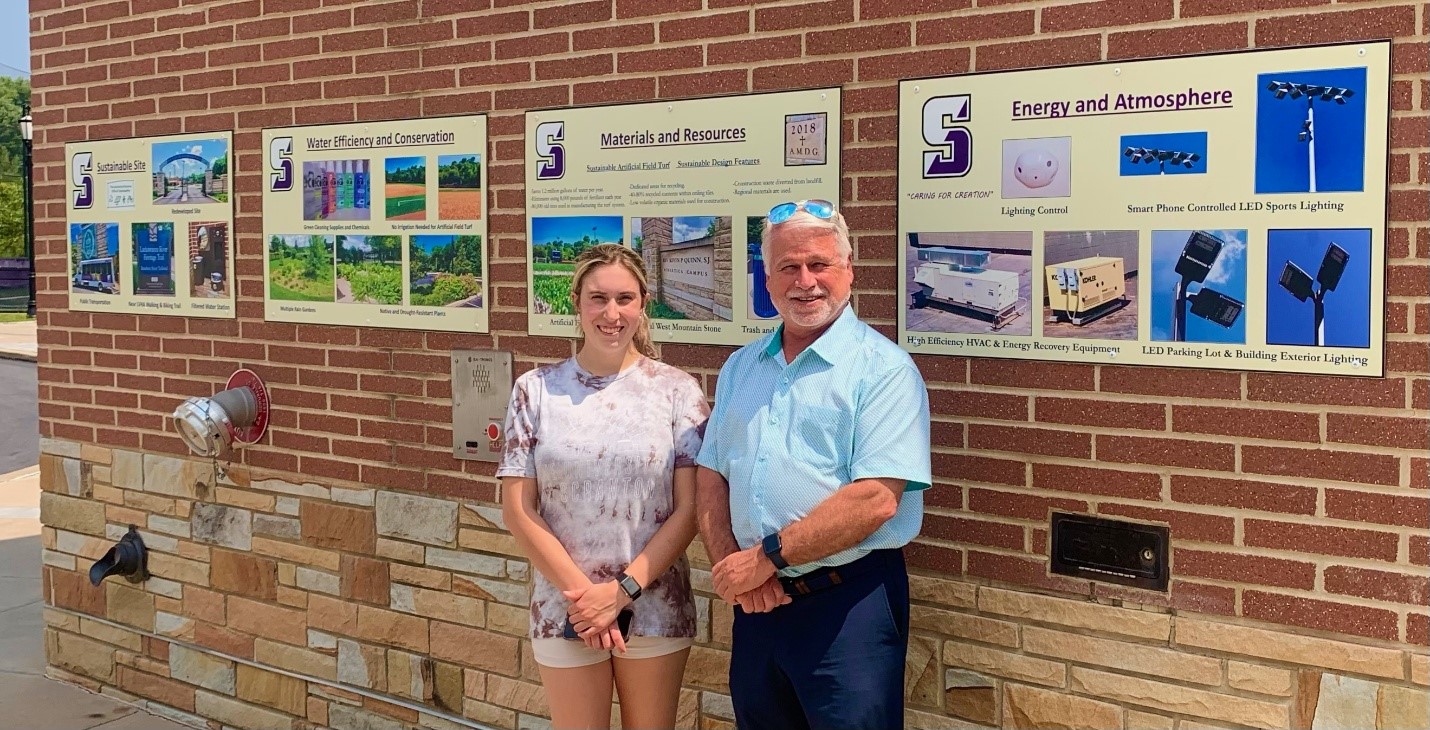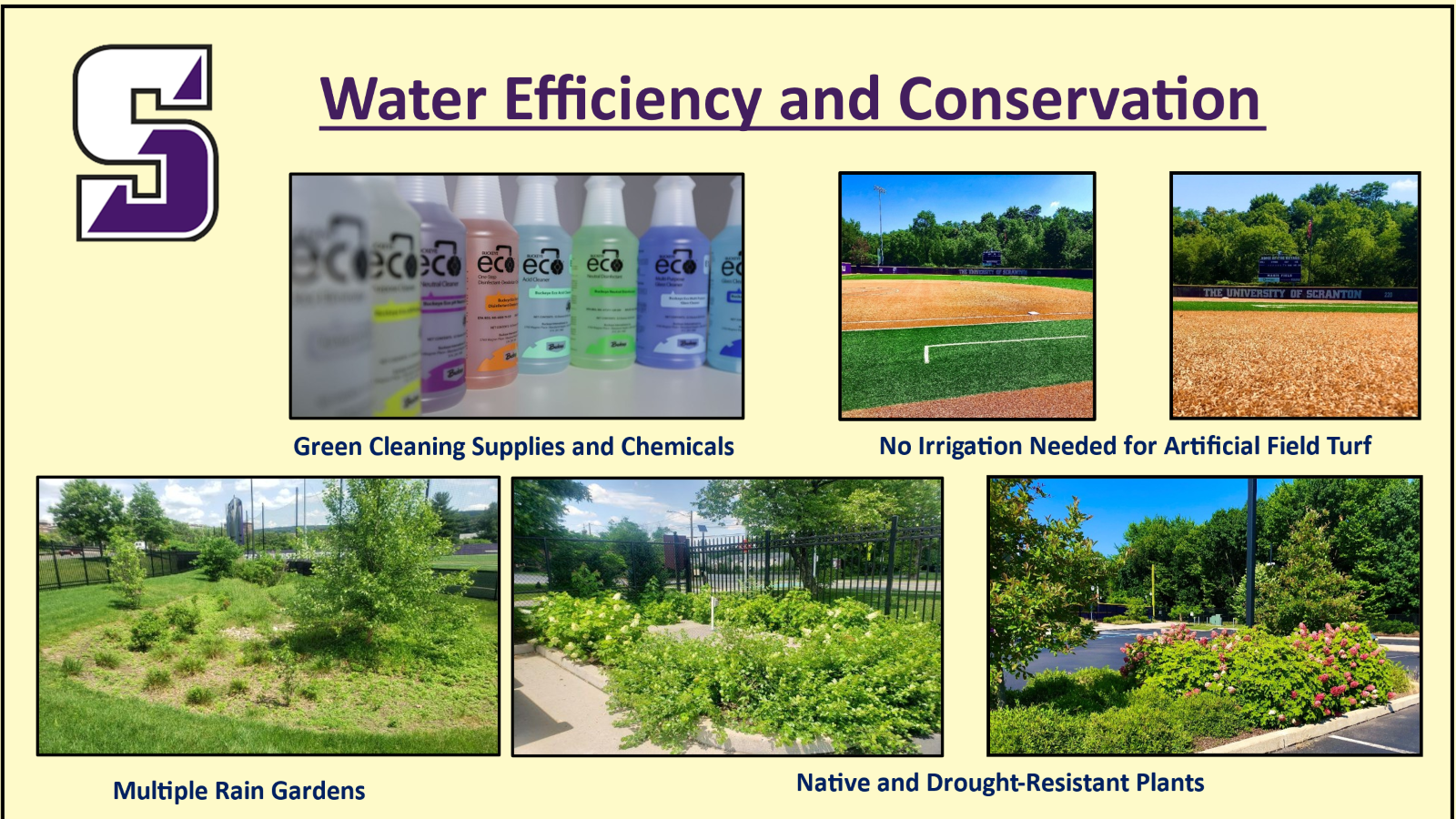Practicing Sustainability at the Rev. Kevin P. Quinn Athletics Campus

By Amelia Farry '25, and Meghan Caffrey '25, student correspondents
The Rev. Kevin P. Quinn, S.J. Athletics Campus at The University of Scranton provides a key location for extracurricular athletics. It hosts many games and allows for a practice space for The University of Scranton’s sports teams including Magis Field (softball), Volpe Field (baseball) and Weiss Field (soccer, lacrosse, field hockey.) Sustainability practices play a significant role at the campus.

Sustainable materials, including those from recycled sources, were used in the construction; the project emphasized waste reduction and recycling. The athletics campus is a focal point for the University's commitment to sustainability, which incorporates energy-efficient systems, eco-friendly building materials and sustainable practices.
The sustainability practices are primarily driven by collaborations between the Facilities Management Department, Office of Sustainability, Athletics Department, faculty, staff and students. Key sustainable features include, but are not limited to, LED lighting, artificial turf fields and rain gardens.

Upon entering the Rev. Kevin P. Quinn, S.J. Athletics Campus, five signs detailing sustainable features are displayed on the exterior of the main building. Students in the Office of Sustainability designed and created the environmental signs to raise awareness and highlight the sustainable features of the modern facility.

Sustainable features include smart-phone-controlled LED sports lighting, LED parking lot lights and LED lighting for the building’s interior and exterior. Artificial field turf is composed of 80,000 previously used tires. Turf fields help conserve 1.2 million gallons of water per year. The turf also eliminates the need for applying 8,000 pounds of fertilizer annually.

As part of the sustainable features, multiple rain gardens collect stormwater runoff from the buildings and use it to water the plants. The system collects and filters rainwater, while reducing runoff and pollution. Rain gardens also require low maintenance. Also, the athletics campus is home to many native and drought-resistant plants.







